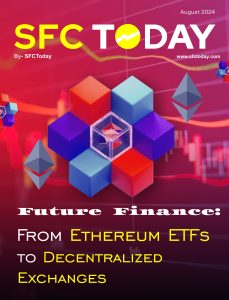Unraveling the NFT Bubble: Examining the Truth Behind Digital Art
What are NFTs?
NFTs are unique digital tokens that exist on a blockchain, a decentralized ledger that records transactions. Unlike cryptocurrencies such as Bitcoin or Ethereum, which are fungible and can be exchanged on a one-to-one basis, NFTs are non-fungible, meaning each token is unique and cannot be exchanged on a like-for-like basis. This uniqueness makes NFTs ideal for representing ownership of digital assets such as artwork, music, videos, and other collectibles.
The Rise of NFTs
The concept of NFTs is familiar, but their popularity surged in late 2020 and early 2021. Several factors contributed to this rise:
Blockchain Technology: The advancement and widespread adoption of blockchain technology provided a secure and transparent way to verify and transfer ownership of digital assets.
Digital Art Boom: The COVID-19 pandemic accelerated the shift towards digital interactions, including the consumption and creation of digital art. Artists sought new ways to monetize their work, and NFTs offered a promising solution.
Celebrity Endorsements: High-profile endorsements and participation from celebrities and influencers brought mainstream attention to NFTs. Artists like Beeple, who sold an NFT for $69 million, and musicians like Grimes, who sold digital art for millions, fueled the hype.
Speculative Investment: The potential for significant returns attracted investors and speculators, leading to a surge in NFT transactions and prices.
How Do NFTs Work?
NFTs are created through a process called minting, which involves publishing a digital asset on a blockchain. Here’s a simplified breakdown of how NFTs work:
Creation: An artist or creator makes a digital file (e.g., an image, video, or music track) and converts it into an NFT by minting it on a blockchain platform like Ethereum.
Verification: The blockchain records the NFT’s creation, providing a unique identifier and metadata that cannot be altered.
Ownership Transfer: NFTs can be bought and sold on various marketplaces such as OpenSea, Rarible, and Foundation. Ownership is transferred through blockchain transactions, ensuring transparency and security.
Royalties: Smart contracts, which are self-executing contracts with the terms directly written into code, can be embedded within NFTs. These contracts can include royalty provisions, ensuring creators receive a percentage of sales whenever the NFT is resold.
The Bubble Argument
The notion of NFTs being a bubble arises from several factors reminiscent of historical speculative bubbles, such as the Dot-com bubble and the Tulip mania. Here are the key points that fuel the bubble argument:
Speculative Frenzy: The rapid increase in NFT prices, driven by hype and speculation, mirrors past market bubbles. Examples include a digital artwork by Beeple selling for $69 million and tweets being sold as NFTs for thousands of dollars.
Market Volatility: The NFT market is highly volatile, with prices for certain NFTs skyrocketing and then plummeting in short periods. This volatility suggests a lack of intrinsic value and a market driven by speculation.
Scarcity and Exclusivity: The artificial shortage created by limiting the number of NFTs for a digital asset can inflate prices beyond reasonable levels. Critics argue that this scarcity does not equate to real-world value.
Lack of Regulation: The NFT market operates with minimal regulation, increasing the risk of fraud, market manipulation, and investment loss. The lack of oversight has raised concerns about the market’s sustainability.
Counterarguments: While the bubble argument has merit, there are also compelling reasons to believe in the long-term value and potential of NFTs:
Provenance and Authenticity: NFTs provide a secure way to establish provenance and authenticity for digital assets. This is particularly valuable in the art world, where verifying a piece’s originality can be challenging.
The Future of NFTs: Bubble or Revolution?
Determining whether NFTs are a bubble or a revolutionary technology requires a nuanced understanding of both their current state and future potential. Several factors will influence the trajectory of NFTs:
Market Maturity: As the NFT market matures, it is likely to undergo corrections that weed out speculative excesses. A more stable and regulated market could emerge, similar to the evolution of the cryptocurrency market.
Technological Advancements: Continued advancements in blockchain technology, including scalability and energy efficiency, will play a crucial role in the sustainability of NFTs. Solutions to current issues, such as high transaction fees and environmental impact, will be pivotal.
Regulatory Frameworks: The introduction of regulatory frameworks can help protect investors and ensure fair practices within the NFT market. Regulation can also legitimize NFTs, attracting more institutional investment.
Broader Adoption: The integration of NFTs into mainstream applications and industries will drive their adoption and longevity. For example, NFTs could revolutionize industries such as real estate, music, gaming, and fashion.
The debate over whether NFTs are a bubble or a lasting innovation has yet to be settled. The rapid rise in their popularity and the speculative nature of the market exhibit characteristics of a bubble. However, the underlying technology and the potential benefits of NFTs suggest that they could represent a significant advancement in digital ownership and monetization.
NFTs provide a new way for artists and creators to engage with their audiences, establish ownership, and create sustainable revenue streams. While the market may experience volatility and corrections, the core principles of NFTs offer valuable solutions to long-standing issues in various industries.
In the end, the truth about NFTs lies in their ability to evolve and integrate into broader applications beyond the current hype. As the market matures, we may see NFTs becoming a foundational technology for digital ownership and a crucial component of the digital economy. Only time will tell if NFTs are a fleeting bubble or the dawn of a new era in digital art and beyond.
FAQs
1. Is NFT Legal in India?
As of now, NFTs (Non-Fungible Tokens) operate in a legal gray area in India. While there are no specific regulations addressing NFTs directly, they fall under the broader category of digital assets and cryptocurrencies, which are not explicitly banned but are subject to scrutiny by financial regulators. The Reserve Bank of India (RBI) had previously imposed restrictions on cryptocurrency transactions, but the Supreme Court of India lifted this ban in March 2020.
2. How Does an NFT Make Money?
Artists and creators can mint NFTs and sell them directly to collectors on NFT marketplaces like OpenSea, Rarible, and Foundation. The initial sale price can vary based on the creator’s reputation, the uniqueness of the asset, and market demand.
Many NFTs are programmed with smart contracts that include royalty clauses. This means the original creator receives a percentage (usually 5-10%) of the sale price each time the NFT is resold. This provides ongoing revenue streams for artists and creators.
3.Is NFT a Good Investment?
The NFT market is highly volatile, with prices fluctuating significantly in short periods, which can lead to substantial gains or losses. Many NFT investments are speculative, driven by hype and market sentiment rather than intrinsic value, which can lead to bubble-like conditions. For collectors and investors who understand the digital art and collectibles market, NFTs can offer unique investment opportunities, particularly for rare and sought-after items.
4.How Much Does 1 NFT Cost?
The cost of an NFT varies widely depending on factors such as the creator’s popularity, the uniqueness of the digital asset, the platform it’s sold on, and current market demand. Prices can range from a few dollars to millions. Many NFTs sell for a few dollars to a few hundred dollars, especially those by lesser-known artists or those that are part of a larger collection.
High-end NFTs: Unique pieces by well-known artists or those with significant cultural impact can sell for thousands or even millions of dollars.
5.What is the Most Expensive NFT Ever Sold?
As of now, the most expensive NFT ever sold is Beeple’s “Everydays: The First 5000 Days.” This digital artwork, a collage of 5,000 individual images created by Beeple (real name: Mike Winkelmann) over 13 years, was auctioned by Christie’s in March 2021 for an astonishing $69.3 million.


